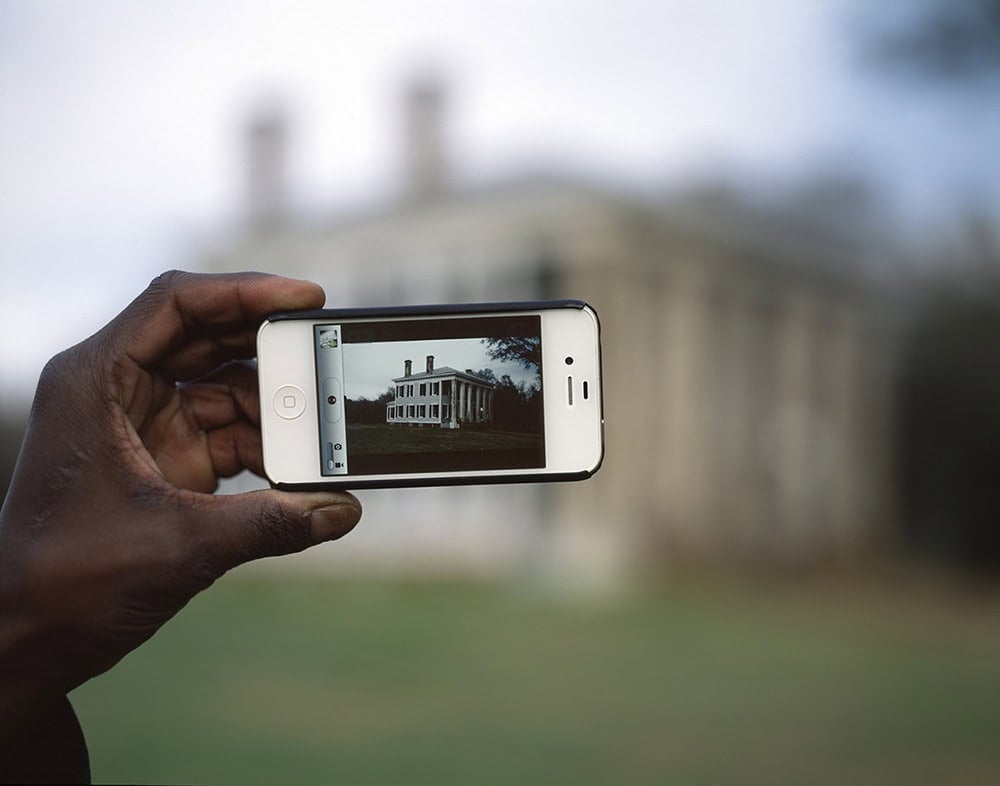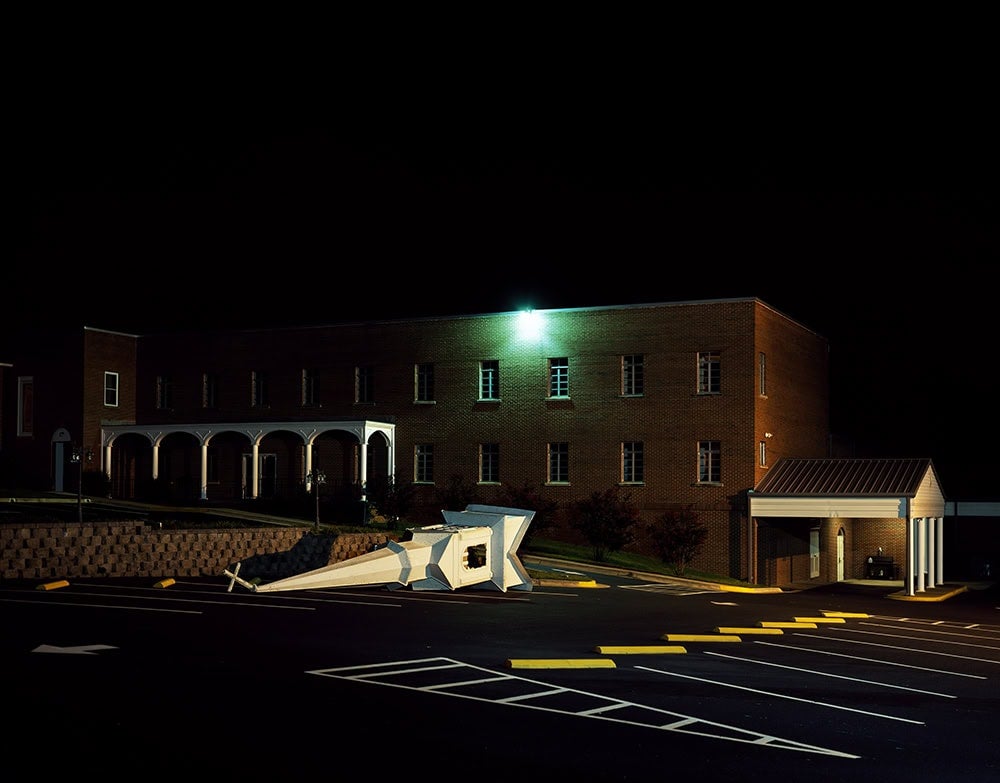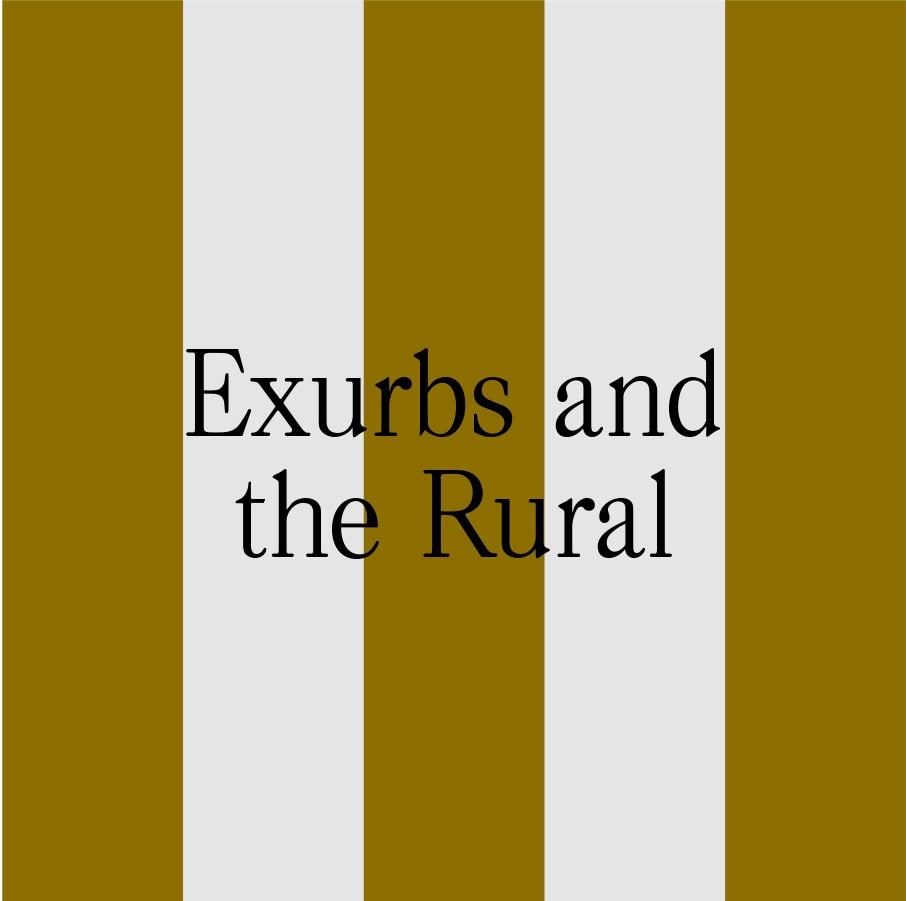
RaMell Ross allows viewers to sit in a scene. Some of these last until you feel as though the protracted moment is alive, now glaring back at you. In one such scene, a little boy dashes back and forth across a living room for three minutes. Then, for another three minutes, we are placed in a locker room before a basketball game, but there is no pregame speech, no last-minute strategizing—just a kibitzing, horseplay, a sofa.
Almost dogmatic about his methods, Ross deliberately creates space for Black people to be seen. His work as a filmmaker—particularly his 2018 documentary Hale County This Morning, This Evening—deploys the same sensibility as his photographs. They each offer visually enticing points of entry, often through Ross’s enviable use of light and color, shadow and mystery. We see a person, we see a toppled church steeple, but what are we not seeing? For Ross, the evasion is as important as the disclosure.
He once had hoop dreams. In high school, Ross averaged twenty points per game and received an honorable mention from the selection committee for the annual McDonald’s All-American team. Despite missing his entire senior season due to an injury, Ross still landed at Georgetown University, where he played basketball from 2001 to 2005. Continually beset with injuries, he eventually turned to photography. The next year, in 2006, coaching basketball and teaching photography brought Ross to Hale County, Alabama.
Best known through photographs by Walker Evans for James Agee’s 1941 book Let Us Now Praise Famous Men and, later, through photographs by William Christenberry, Hale County has long served as a primary setting for the collective understanding of what the rural South looks like. While Christenberry’s images focus on color and form across the landscape, the images by Evans—mostly depicting sharecropper families from Hale County during the Great Depression—are among the most recognizable depictions of poor white Southerners in the American visual lexicon. In both cases, however, the images are also largely devoid of the presence of Black people.
Ross began filming in 2009, three years after moving to Alabama. What was initially intended as a means to document and distill his daily life became an award-winning, seventy-six-minute-long film. Hale County This Morning, This Evening centers on Daniel Collins, a basketball player at Selma University, and Quincy Bryant, a new father with a burgeoning family. The film is culled from more than 1,300 hours of footage taken over the course of several years. During this period, Ross was embedded in the most sacred and intimate moments of these men’s lives, including births and deaths in their families.
While he often filmed spontaneously, or without much of a specific outcome in mind, the editing process was revelatory for Ross, who realized the power of a single moment taken out of the larger context. He also recognized that providing viewers with a cohesive narrative could ultimately render the story too familiar, too flat. “From my experiences thinking about art, thinking about Black folks, thinking about the media—the more that someone knows,” he told me, “the more judgment that comes along with that.”

Organized orchestrally, the film is structured as a series of five movements inspired by hip-hop music videos. The movements are each separated by a title card posing a question in white text set against a black background: How do we not frame someone? What happens when all the cotton is picked? In one section, the query “Whose child is this?” is repeated multiple times, with the speaker’s voice slowed down and distorted in a manner that evokes the chopped-and-screwed sonic forms pioneered by Houston’s DJ Screw.
Through this decontextualized approach to storytelling, Ross seizes upon moments that feel unmoored within the larger narrative: birds in flight, cheerleaders and the ambient sounds of a basketball game, fields of cotton, sirens flashing. The camera moves closer in these moments, tenderly allowing people to exist in visual space without defining them by the historical narratives that could reduce or restrict the significance of their presence. Without conventional cinematic signals, the film places responsibility for any racialized projections solely on the viewer. “That’s what produces violence towards Black people,” Ross asserted. “It’s the way in which we’re trained to see and to make assumptions.”
In addition to the general influences of writer Toni Morrison and filmmaker Terrence Malick, Ross cites Allen Ginsberg’s poem Howl and Darby English’s book How to See Artwork in Total Darkness as formative for Hale County This Morning, This Evening. “All artists are using a different language to talk about what we all know to be true,” Ross said. “Existence, time, love, death—all of these things have been explored millions of times, and we’re still looking for the sufficient language.” In English’s book, he found what he called “astoundingly precise language as to the nature of Black representational space and the ultimate aim of all artists who are people of color to escape this space.” He continued, “I interpret that as meaning the goal is to make something that’s so beautiful, so grand, or so epic that it has to be contented with on its own formal terms, not based upon the ethnicity or race of the maker.”
Ross has approached making art with the same rigor he once applied to playing basketball, working diligently and consistently. Despite having produced ample visual material, Ross only publicly shows his work with an exacting degree of discretion. He views every single image that he makes as a specific contribution to the world, understanding his work more as a form of knowledge production than mere image-making. “When you care to think about images and the ways in which they either extend, undermine, or amend cultural ideology, the process becomes more involved artistically—but it also becomes more fun,” Ross said.
In Hale County, there’s a scene in which a man burns tires in a wooded area. Through his lens, Ross conveys his enamored fascination with the piercing rays of sunlight that lend gravitas and beauty to the billowing smoke clouds rising beyond the treetops. Ross explains to the curious man that he is filming, and the gentleman then shares that his grandson has just received a scholarship for photography. “We need more Black people taking photos around here,” Ross responds.
Over the course of the film, Ross witnesses Black families celebrating and grieving together: overcome by emotion in a church pew, in a dorm room at Selma University, in the delivery room for the birth of Quincy’s twins. Boosie, Quincy’s partner, asked Ross to be there for some of these moments simply because she wanted someone to document them. Otherwise, there might have been no record—a fact that exemplifies the lack of attention given to the moments that compose the lives of Black people in the rural South.
“There’s nothing better,” Ross said, “than having proof of your existence.”

This essay is part of Burnaway’s yearlong series on Exurbs and the Rural. It originally appeared in Laws of Salvage: The 2020 Burnaway Reader.




